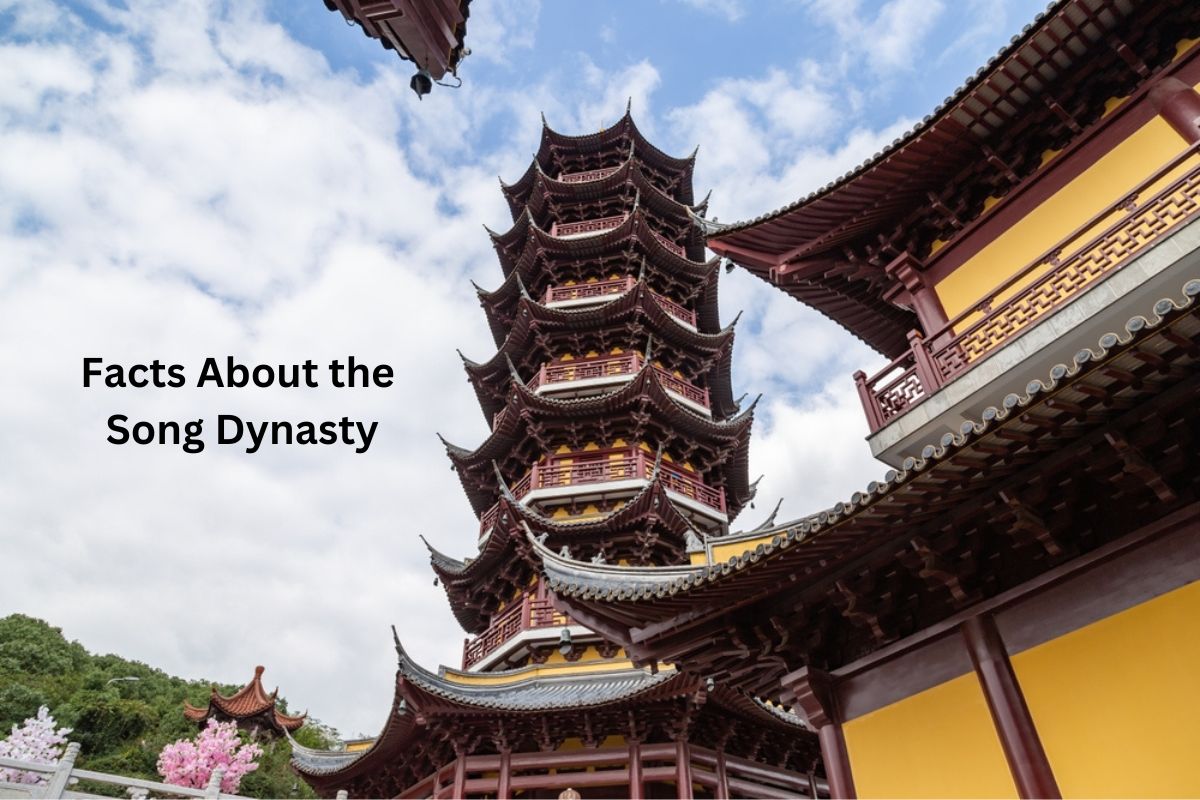The Song Dynasty, spanning from 960 to 1279 AD, was a pivotal era in Chinese history known for its economic prosperity, technological innovation, and cultural achievements.
Divided into the Northern and Southern periods, the dynasty witnessed the rise of a merit-based civil service examination system, the development of Neo-Confucian philosophy, and groundbreaking inventions like movable-type printing and gunpowder.
Maritime prowess and artistic excellence further characterized the dynasty, while challenges from neighboring powers and eventual Mongol conquest marked its decline.
Urbanization and a vibrant society rounded out this complex and influential chapter in China’s past.
Song Dynasty Facts
1. 960-1279 AD
The Song Dynasty was one of China’s most significant dynasties, ruling for over three centuries. It can be divided into two main periods: the Northern Song (960-1127) and the Southern Song (1127-1279).
Also Read: Accomplishments of the Song Dynasty
The Northern Song was characterized by stability and strong central government control, while the Southern Song faced challenges due to its relocation southward and external threats.
2. Prosperous trade and technology advancement
The Song Dynasty witnessed remarkable economic growth, fueled by agricultural innovations such as improved rice cultivation techniques that led to higher yields. This agricultural surplus supported a growing population and urbanization.
Also Read: Tang Dynasty Timeline
Technological advancements were also prominent. Movable-type printing, invented during this time, revolutionized the spread of knowledge by allowing for the mass production of books.
Additionally, gunpowder, initially developed as a military explosive, found diverse applications, including in weaponry and fireworks, contributing to the dynasty’s innovative reputation.
3. Government officials selected based on merit
The Song Dynasty established the civil service examination system as a means of selecting government officials based on merit rather than social status. This system aimed to create a more competent and efficient bureaucracy by allowing individuals from various backgrounds to compete for government positions.
Prospective officials were tested on their knowledge of Confucian classics, poetry, and other subjects. This approach aimed to ensure a stable and educated ruling class, enhancing the administration’s effectiveness and promoting social mobility.
The civil service examination system had a lasting impact on Chinese governance and education systems.
4. Blend of Confucian, Buddhist, and Daoist ideas
Neo-Confucianism was a philosophical and ethical movement that emerged during the Song Dynasty. It sought to revive and reinterpret Confucian teachings while incorporating elements from Buddhism and Daoism.
Scholars like Zhu Xi played a crucial role in shaping Neo-Confucian thought, emphasizing the importance of moral cultivation, self-discipline, and the pursuit of a harmonious society.
This philosophical system had a profound influence on Chinese culture, politics, and social norms, lasting well beyond the Song Dynasty.
5. Movable-type printing, gunpowder, fireworks
The Song Dynasty was a period of significant technological progress. Movable-type printing, attributed to Bi Sheng, allowed for the efficient production of books and dissemination of knowledge, which played a crucial role in the spread of literature and information.
Gunpowder, initially discovered by alchemists, was harnessed for military applications such as flamethrowers and explosive devices. This period also saw the invention of fireworks, which were used for entertainment and later spread to other parts of the world.
The development of these technologies had far-reaching consequences for both warfare and culture.
6. Southern Song had a strong navy and trade
During the Southern Song period, China experienced a maritime renaissance. The government sponsored ambitious naval expeditions led by Admiral Zheng He, exploring distant lands and establishing diplomatic and trade relations.
Zheng He’s voyages reached as far as Southeast Asia, India, and even East Africa. The maritime trade routes, often referred to as the “Maritime Silk Road,” facilitated the exchange of goods, culture, and ideas between different regions.
This maritime expansion contributed to the prosperity of coastal cities, such as Hangzhou, which became a vibrant center of trade and culture.
7. Landscape painting, cultural achievements
The Song Dynasty was a time of remarkable artistic and cultural achievements. Landscape painting, known as “shanshui,” reached new heights during this period.
Artists like Fan Kuan and Li Cheng created stunning works that captured the natural world’s essence and beauty. Calligraphy also flourished, with scholars and artists perfecting various styles of writing.
This era produced renowned poets such as Su Shi (Su Dongpo) and Huang Tingjian, whose poetry reflected the society’s values, emotions, and natural surroundings.
8. Fell to Mongols in 1279
Despite its cultural and technological accomplishments, the Song Dynasty faced internal and external challenges. The Jurchen Jin Dynasty to the north and the Mongol Empire threatened its borders, leading to military conflicts and territorial loss.
The dynasty’s split into the Northern and Southern Song weakened its central authority. Eventually, the Southern Song capital of Hangzhou fell to the Mongols in 1279, marking the end of the dynasty and the beginning of the Yuan Dynasty.
9. Famous poets and historical records
The Song Dynasty was a fertile ground for literary achievements. Alongside famous poets like Su Shi and Huang Tingjian, scholars engaged in historical research and compilation.
Historians such as Sima Guang contributed to monumental works like the “Zizhi Tongjian,” a comprehensive chronicle of Chinese history. These literary endeavors contributed to the preservation of historical records and cultural heritage.
10. Growth of cities and societal changes
Urbanization was a defining characteristic of the Song Dynasty. The development of markets, trade routes, and centers of industry led to the growth of cities.
The capital city of Kaifeng was a bustling hub of commerce and culture during the Northern Song, while Hangzhou thrived as the capital of the Southern Song.
The rise of urban centers fostered a dynamic society with diverse social classes, from scholars and bureaucrats to merchants and artisans. This urban environment encouraged the exchange of ideas, trade, and innovation.
